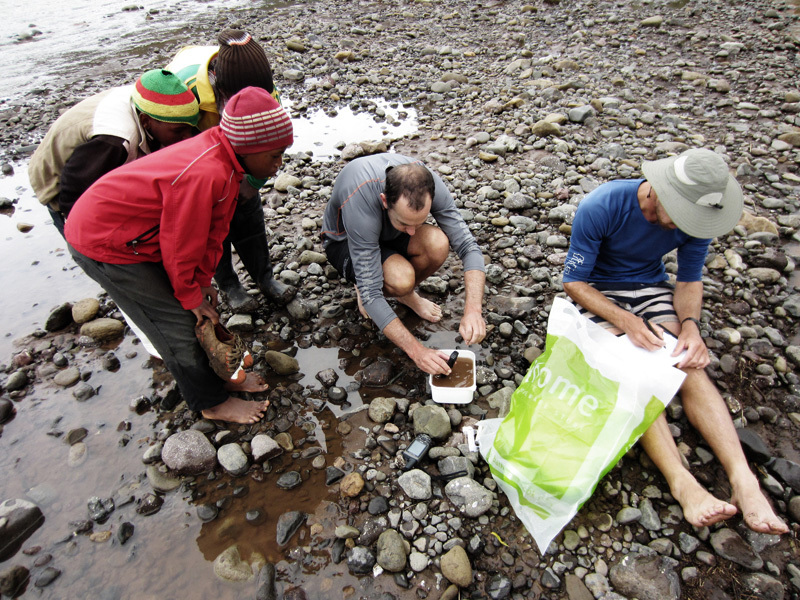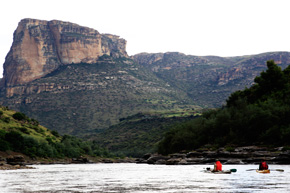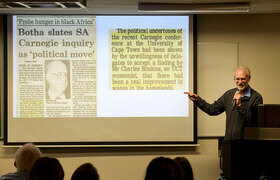UCT trio on epic journey of the Orange River
28 January 2013 | Story by Newsroom
It goes by many names: the Groote, the !Gariep, or the Senqu, the latter in Lesotho where the river rises in the Drakensberg. Now, a trio of UCT researchers is paddling the length of the Orange to conduct a mega-transect of the waterway - all 2 200km to the Atlantic.
The two-month Senqu2Sea expedition will take the trio from Qacha's Nek in Lesotho to Alexander Bay. The three, PhD student James Puttick, recent MSc graduate Sam Jack and Ian Durbach, a statistical sciences lecturer, aim to paddle 40 km a day - when they're not delayed by rapids, broken paddles and other niggly obstacles.
The transect will provide an ecological census of the natural vegetation and ecosystems along the country's biggest waterway - and test the health of its myriad tributaries and water systems. The expedition is being supported by UCT's Plant Conservation Unit, the Mazda Wildlife Vehicle Fund and the National Research Foundation's South African Environmental Observation Network (SAEON), Arid Lands Node.
Puttick studies vegetation and climate change in eastern South Africa. He is taking photographs, from his kayak, at 2-km intervals and also from various elevations along the banks to document the changing vegetation and land use impacts. The GPS positions will allow others to take pictures later, for historical comparisons, providing a mirror of landscape changes and development along the river.

To test the river's health the team will collect diatom samples for a project sponsored by SAEON and led by Jonathan Taylor at North West University.
These samples come from the slimy layer covering submerged rocks and macrophytes, both in areas where there's a history of sampling and also where there are gaps in the record of the !Gariep system.
Roger Diamond, who leads an oxygen isotope project in UCT's Department of Geology, will study these water samples collected from the main tributaries and from the Orange itself, information that will sketch a picture of the different conditions in the tributaries' watersheds during rainfall events.
Floating down a river may be an idyllic way to conduct research, but it's not all plain paddling. Diatom collecting has been difficult. After flooding, the river silt has scoured the rocks of the thin layer of diatoms and high-water levels means the rocks are further underwater.
Fortunately the team missed the "really nasty" flooding to the seaward side of the Drakensberg when they set out on 12 January, but hit "gnarly white water" on later stretches of the river.
Camping is alongside the river and their meals have been improved following Jack's discovery of Boletus mushrooms under the groves of poplar trees along the banks, according to their blog reports.
Kayakers are an unusual sight in these remote areas and the local Basotho greet them enthusiastically, "with much shouting and waving from cliff tops".
[Fast fact: The river was named not for its colour but in honour of William V of Orange. Colonel Robert Jacob Gordon, commander of the Dutch East India Company garrison in Cape Town, named the river during a trip to the interior of South Africa in 1779.]
 This work is licensed under a Creative Commons Attribution-NoDerivatives 4.0 International License.
This work is licensed under a Creative Commons Attribution-NoDerivatives 4.0 International License.
Please view the republishing articles page for more information.










